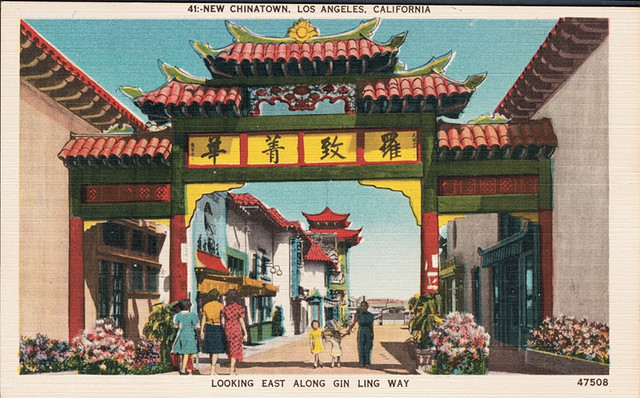 Image provided by Metro Transportation Library and Archive, and used under a Creative Commons license
Image provided by Metro Transportation Library and Archive, and used under a Creative Commons license
1. On Gold Mountain begins by focusing largely on the story of Fong See. Is Fong See the most important person in the book thus far, or are the stories of other people more important to the narrative and our understanding of the family’s experiences?
2. Larry Sells and Lisa See have noted that “While many people initially read On Gold Mountain because they’re interested in learning about the Chinese-American experience, they often become more attached to the stories of the white women—Ticie, Stella, and Carolyn—who married into the See family.” Do you think this was Lisa See’s intention? Do you think See herself is more fascinated by Ticie’s and Stella’s experiences than those of her other relatives? (Explain your answers.) What are the opportunities and liabilities engendered by readers’ fascination with the white women in the story?
3. Is there a moment when the See and Fong families became more American than Chinese? If so, when? (Consider this question from three perspectives: their own conceptions of their identities, Lisa See’s implied ideas about identity, and your own estimations.) What decisions did individual members of the family make that made them lean more toward one culture than the other? Did gender seem to influence their understanding of ethnicity in the western U.S.?
4. We have spent a significant amount of time this semester discussing photographs. How do the photographs included in On Gold Mountain influence your understanding and perception of the Fong and See families? Explain.
5. In 2001, the Smithsonian Institution put together an exhibition inspired by On Gold Mountain. The 11-year-old digital manifestation of this exhibition remains online. Does the information presented in this exhibit capture the most important aspects, in your opinion, of the Fong and See families’ experiences as Lisa See presents them?
6. Technology now allows for considerably more flexibility in designing online exhibits. Imagine the Smithsonian commissioned your group to revise the On Gold Mountain exhibition website. What suggestions would you make? Consider exhibition content as well as technology and format.